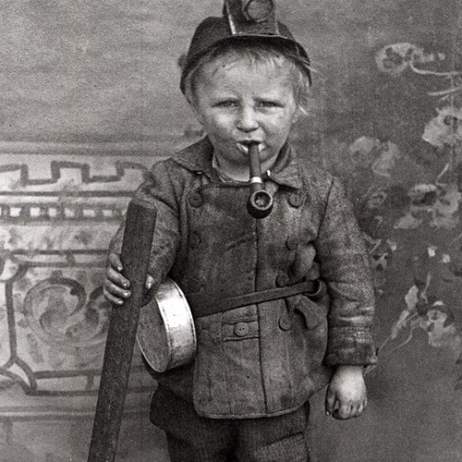
Brief Overview
It has been said that the Second Great Awakening had the greatest social impact of any event in the history of America.
This awakening was an assortment of revivals that occurred throughout America over a period of 50 years. It is not accurate to say that it began with, or spread from, one location, or that it was initiated by one individual. It was a widespread sovereign move of the Holy Spirit.
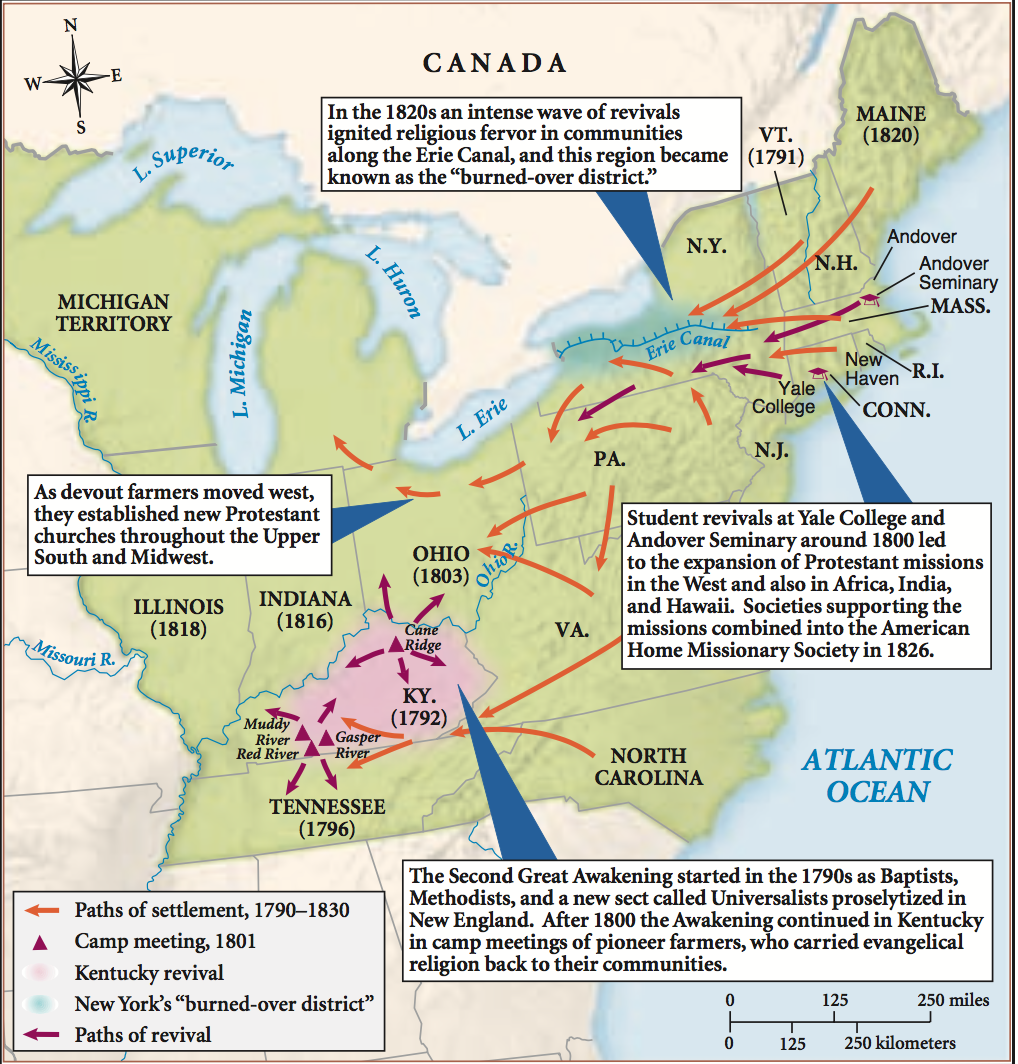
The Condition of the Nation
Following the Revolutionary War (1776-1781), the United States experienced a moral slump and the churches had become almost totally irrelevant in curbing the nation’s downward spiral into immorality.
►During the last decade of the century, out of a population of five million Americans, six percent were confirmed drunkards.
►Crime had grown to such an extent that bank robberies were a daily occurrence.
►Women did not go out at night for fear of assault.
►The Methodists were losing 4,000 members per year.
►The Baptists said that they had their most wintry season.
►In a typical Congregational church, the Rev. Samuel Shepherd of Lennox, Massachusetts, in sixteen years had not taken one young person in fellowship.
►The Lutherans were so languishing that they discussed uniting with Episcopalians who were even worse off.
►The Protestant Episcopal Bishop of New York…quit functioning; he had confirmed no one for so long that he decided he was out of work, so he took up other employment.
►The Chief Justice of the United States, John Marshall, wrote to the Bishop of Virginia, James Madison, that the Church “was too far gone ever to be redeemed.”
►Voltaire said, “Christianity will be forgotten in 30 years time.”
►Church historian Kenneth Latourette said,
It seemed as if Christianity were about to be ushered out of the affairs of men, and
…only 5% of Americans in 1790 had formal ties to churches.
►Deism and humanistic philosophies (Enlightenment) were blanketing Europe and the United States, with universities being saturated with its teachings.
►Anti-Christian writings were circulated in America. The Revolutionary War hero Ethan Allen published the book, Reason: the Only Oracle of Man, and Thomas Paine, in 1794 wrote, The Age of Reason. Both books worked to strip away the foundation built on the authority of God’s Word and ridiculed the Old and New Testaments as being unworthy of a good God. Concerning the Bible, Paine went so far as to say,
…It would be more consistent that we called it the word of a demon than the word of God.
►Harvard University did not have a single Christian in the entire student body.
►Princeton University only had two believers.
►Williams College conducted a mock Communion service.
►Dartmouth College students conducted anti-Christian plays.
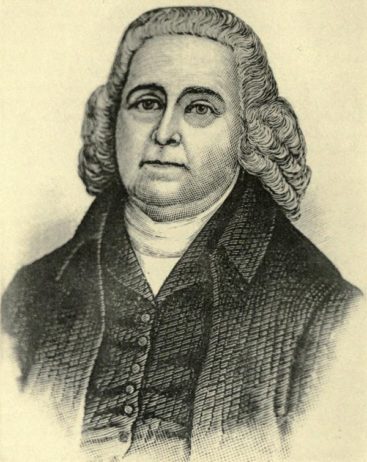
Rev. Isaac Backus: Instrumental
in initiating the “Concert of
Prayer” in America
Extraordinary Prayer
Similar to what was taking place in the United States, England was also experiencing a spiritual drought. In 1791 a number of prominent English church leaders called for a “Concert of Prayer” for the outpouring of the Holy Spirit. British denominations took seriously the call to prayer, and the results were almost immediate, with widespread revivals taking place throughout England, Scotland, Wales, Ireland, and Scandinavian countries.
In the United States, Isaac Backus and other church leaders saw the results experienced in England, and they issued a similar call to prayer in 1794, and it was heartily embraced throughout the nation.
The “Concert of Prayer” in America was started in January 1795 and by 1798 revivals had broken out in many locations.
What Happened
Keep in mind that the Second Great Awakening (1790-1840) was a series of revivals that occurred throughout the United States over a period of 50 years.
►Western Pennsylvania and Southern and Western Virginia: Around 1790 there was a move of the Holy Spirit in Western Pennsylvania and Southern and Western Virginia. Following this, the infectious nature of the revivals spread into the New England states.
►New England Revivals: In 1791 there began an unbroken series of revivals throughout New England. Revivals were reported in North Yarmouth and Lee, Maine, and East Haddam and Lyme, Connecticut. Though the populations of these towns were very small, hundreds were brought to Christ through these revivals. Within the period of five or six years, commencing with 1797, it has been stated that not less than 150 churches in New England were visited with times of refreshing from the presence of the Lord. One minister reported,
I saw a continued succession of heavenly sprinklings at New Salem, Farmington, Middlebury, and New Hartford [Connecticut], until, in 1799, I could stand at my door in New Hartford, Litchfield county, and number fifty or sixty congregations laid down in one field of divine wonders, and as many more in different parts of New England.
►Kentucky Revival of 1800: Red River and Gasper River churches in Kentucky experienced revival.
►Kentucky Revival of 1801: This was the revival at Cane Ridge, Kentucky, which spread into Ohio and Indiana.
►1802 Revivals at Yale and other Colleges: Yale experienced multiple revivals during the Second Great Awakening, and it spread to many universities.
►Upstate New York Revivals of 1815-1840: Hundreds of thousands were added to church membership in New York State during this period of time.
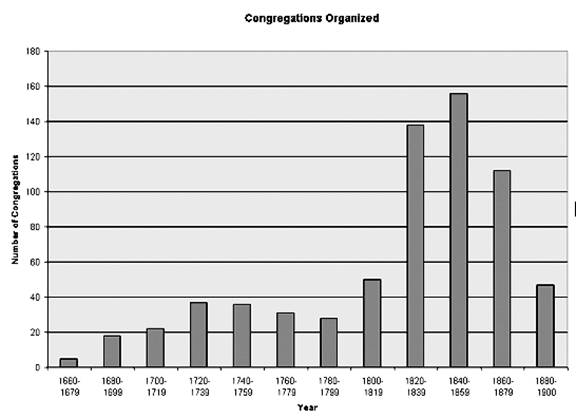 Churches Started in New Jersey Alone
Churches Started in New Jersey Alone
Results
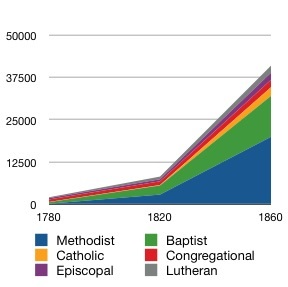
GROWTH OF DENOMINATIONS
During the Second Great Awakening
►Tenfold Increase in Church Membership: From 1800-1850, the population in the United States increased fourfold, and church membership increased tenfold.
►From 1815 to 1840 the Spirit was poured out upon 400-500 churches every year; and during some years, 40,000 – 50,000 were added to church membership in a single year. Historians have stated that this was the most gracious period in the history of Christendom.
►Many of Yale’s graduating class in 1802 chose to go into full-time Christian ministry.
►Methodist circuit riders took the Gospel to the frontiers as the United States pioneers moved westward.
►In 1770, there were only 20 Methodist churches. By 1860 there were 19,000 churches.
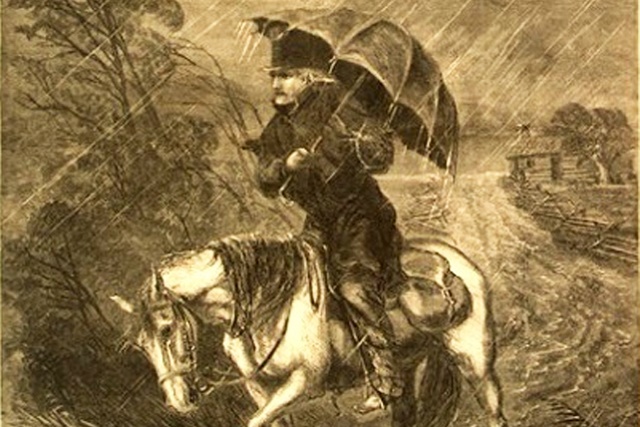 Circuit Riders Took the Gospel to the Frontiers
Circuit Riders Took the Gospel to the Frontiers
The National Emphasis on Charitable Giving During The Second Great Awakening Earned the USA the Title of “The Benevolent Empire”
By 1834, the total annual income of all the benevolent societies rivaled the budget of the entire federal government.
Some of the benevolent societies and other social reform efforts that Americans donated heavily toward, were:
►The American Board of Commissioners for Foreign Missions, founded in 1810
►The American Bible Society, founded in 1816
Child Labor Reform
►The American Sunday School Union, founded in 1817
►The American Tract Society, founded in 1825
►The American Temperance Society, founded in 1826
►The American Home Missionary Society, founded in 1826
►Child labor reform
►Women’s rights advances
►Public education established and curriculum developed
►Anti-slavery movement
►Prison reform, along with reduction in brutal punishment
►Insane asylum reform for better treatment for the mentally ill
►The founding of many colleges
►State-supported universities were started
Sources
- Handbook of Revivals by Henry C. Fish
- Association of Religion Data Archives
- Role of Prayer in Revival by J. Edwin Orr
- The Second Evangelical Awakening in America by J. Edwin Orr
- The Light of the Nations by J. Edwin Orr
- Fire from Heaven by Robert Evans
- New England Revivals by Bennet Tyler
- A History of the Expansion of Christianity by Kenneth S. Latourette
- Saving the Republic by Larry G. Johnson
- Second Great Awakening by Wikipedia
- The Return of the Spirit: The Second Great Awakening: by Christian History Institute
- In the Wake of the Second Great Awakening: by Christian History Institute
Return to List of Revival Stories
Chet & Phyllis Swearingen:
Office: (260) 920-8248
romans1015@outlook.com
Beautiful Feet
P.O. Box 915
Auburn, IN 46706

